Encouraging EV Adoption by Promoting Smart Charging
This article may contain affiliate links.
As urban centers globally embrace the electric vehicle (EV) revolution, the necessity for a robust and efficient EV infrastructure has never been more critical. Cities are not just hubs of population and commerce; they are becoming epicenters of EV adoption. This is driven by environmental concerns, technological advancements and the promise of smarter, more sustainable living.
Strategic Planning and Policy Frameworks
A well-defined strategy is essential for cities aspiring to lead this charge and transform into ‘ smart charging’ hubs. This involves more than just installing charging points; it requires holistic strategic planning, technological integration, user-centric design and legal preparedness. A forward-thinking EV infrastructure is not merely about facilitating transportation; it’s about building the foundation for a future where urban mobility is clean, efficient and seamlessly integrated into the fabric of smart city life.
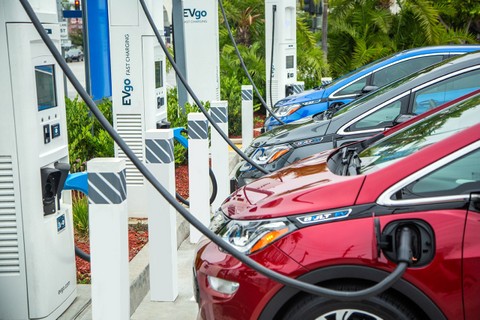
Developing a Comprehensive EV Infrastructure Plan
The cornerstone of any successful EV infrastructure lies in meticulous strategic planning. Cities must move beyond ad-hoc installations and develop comprehensive plans that anticipate future demand and integrate EV infrastructure seamlessly into the urban landscape.
A successful EV infrastructure plan requires a multi-faceted approach. It must consider factors like projected EV adoption rates, optimal charging locations, grid capacity and accessibility for all residents. Detailed assessments of current transportation patterns, energy consumption, and urban development plans are also needed. That ensures that EV infrastructure investments are strategic and future-proof.
A proactive and data-driven approach can help cities avoid the pitfalls of reactive infrastructure development, paving the way for a truly ‘smart charging’ environment. Such planning should also consider the diverse needs of different communities within the city, ensuring equitable access to charging solutions and preventing the creation of charging deserts in less affluent areas.
Using Government Incentives and Programs
Government incentives and programs are pivotal in accelerating the deployment of EV infrastructure. Recognizing the significant upfront costs and the public good served by EV adoption, governments worldwide are offering substantial financial support.
For example, the UK government has announced a £40 million investment from the Local EV Infrastructure (LEVI) Fund. This fund will boost EV charger availability across the Midlands, with plans to install over 16,000 new chargers.
In the US, the National Electric Vehicle Infrastructure (NEVI) program was designed to distribute $5 billion in grants annually over five years. The goal was to establish a network of 500,000 high-speed EV chargers by 2030. [Ed. note: That program may or may not proceed based on the new administration.]
These initiatives help reduce financial burdens on cities and private operators. They also show a strong commitment to electrification, encouraging investment and faster infrastructure growth.
By actively seeking and using these government programs, cities can significantly amplify their infrastructure development efforts and more efficiently achieve ambitious EV adoption targets. These funds often come with guidelines that ensure chargers are placed strategically and meet certain accessibility standards.
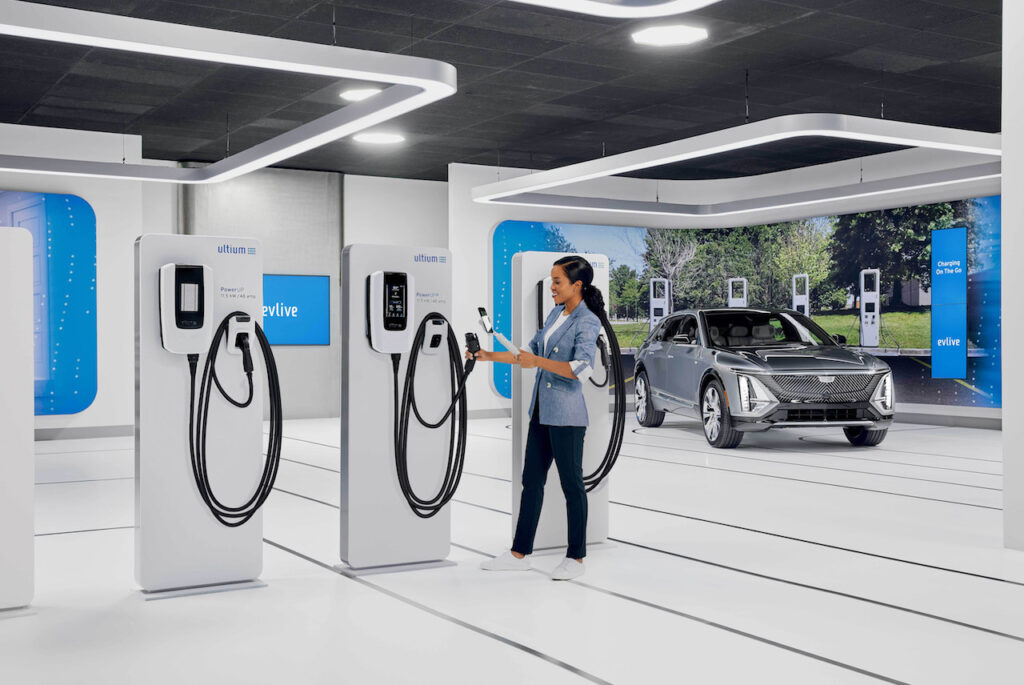
Public-Private Partnerships for Infrastructure Growth
Cities must foster robust public-private partnerships to scale EV infrastructure effectively. The private sector’s expertise and resources are indispensable in navigating the complexities of infrastructure deployment and operation.
Private companies bring innovation, efficiency and capital that can complement public sector initiatives, leading to faster and more sustainable infrastructure growth. Public charging networks, like Electrify America, are making significant private investments. For example, they recently committed $7.4 million to increase public awareness about EVs’ economic and environmental benefits. That highlights the private sector’s role in driving EV adoption.
Moreover, collaborations can take various forms, from joint ventures in charging station construction to private operation of publicly owned charging facilities. These partnerships can also spur innovation in charging technologies, business models, and user services, creating a dynamic and competitive EV ecosystem.
By strategically engaging with private entities, cities can use market forces to accelerate infrastructure development, reduce public expenditures and ensure a higher quality of service for EV users. These collaborations can also help tailor charging solutions to specific urban contexts, such as residential areas, commercial zones and highway corridors.
Technological Integration and Innovation
As EVs grow in popularity, cities are increasingly adopting innovative technologies to enhance their infrastructure and make urban environments more sustainable. Integrating smart charging solutions, advanced data analytics and renewable energy sources is key to optimizing EV systems, reducing grid strain and promoting cleaner energy usage.
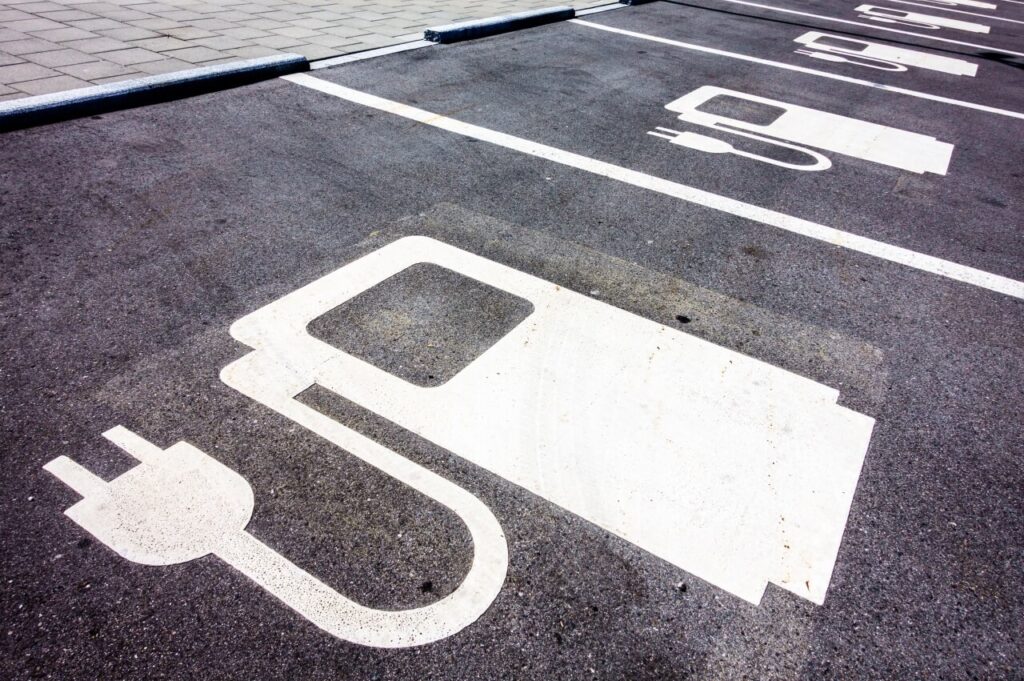
Smart Charging Solutions and Grid Management
Integrating smart charging solutions is crucial for optimizing EV infrastructure and ensuring grid stability. Smart charging technologies allow for managed charging, which optimizes energy consumption by shifting EV charging to off-peak hours when demand is lower and often cheaper. This not only reduces strain on the grid, but also lowers energy costs for EV owners.
According to a report by evchargingsummit.com, managed charging strategies are essential for optimizing grid demand by strategically timing EV charging during periods of lower electricity consumption. Additionally, advanced systems like Vehicle-to-Grid (V2G) technology are emerging. These enable EVs to draw power from the grid and feed energy back, potentially turning EVs into mobile energy storage units that support renewable energy integration.
Recent technological advancements are also enhancing charging efficiency. For example, Ford has rolled out an over-the-air (OTA) software update for its 2022-2023 F-150 Lightning EVs, boosting DC fast charging speeds and cutting charge times by approximately 11%. By embracing these smart technologies, cities can build convenient EV infrastructure that contributes to a more resilient and efficient energy system, paving the way for a truly smart and sustainable urban environment.
Utilizing Data and IoT for Predictive Maintenance
Integrating data analytics and IoT is paramount to establishing the reliability and longevity of EV charging infrastructure. IoT sensors embedded in charging stations can collect real-time data on usage patterns, charging performance, and potential faults. The data can then be analyzed to predict maintenance needs, optimize station uptime and improve operational efficiency.
Predictive maintenance, enabled by IoT, minimizes downtime by addressing minor issues before they become big problems. It ensures charging stations are consistently available when needed. This proactive approach enhances user satisfaction and reduces operational costs associated with reactive repairs and emergency maintenance.
Smart city initiatives increasingly use IoT to create interconnected urban ecosystems, and EV charging infrastructure is a vital component of this. By using data and IoT, cities can manage their EV infrastructure more intelligently, ensuring seamless operation and continuous improvement in service delivery. This data-driven approach can also inform future infrastructure planning and expansion, ensuring that resources are allocated effectively based on actual usage and demand patterns.
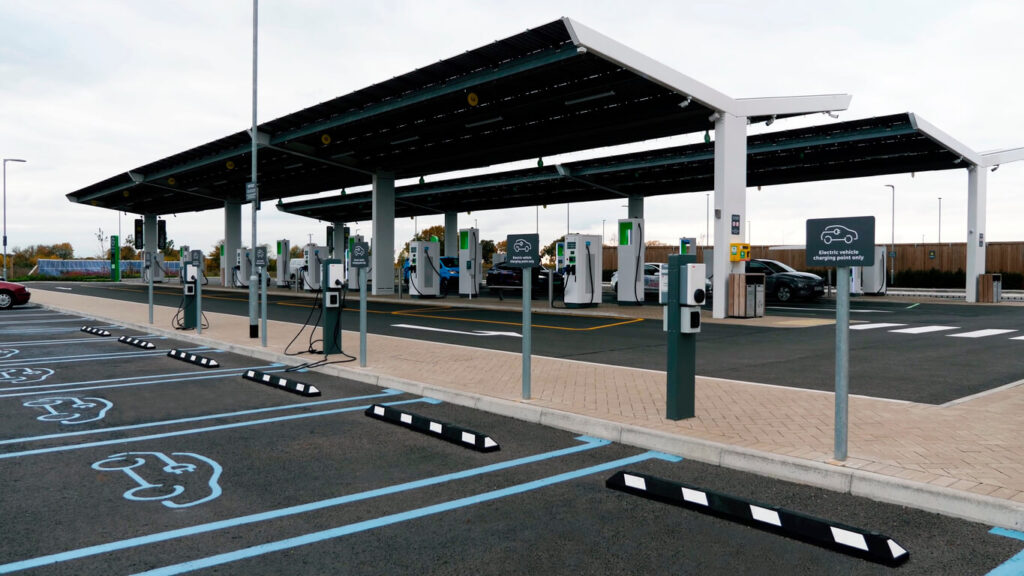
Incorporating Renewable Energy Sources
For EV infrastructure to truly contribute to urban sustainability, it must be powered by renewable energy sources. Integrating them into the EV charging ecosystem reduces electric mobility’s carbon footprint.
Cities can promote the installation of solar panels on charging station canopies or invest in large-scale renewable energy projects to power their EV infrastructure. This not only aligns with broader climate goals, but also enhances energy independence and reduces reliance on fossil fuels.
Clean energy integration can also lead to more cost-effective charging in the long run as renewable energy sources become increasingly competitive with traditional electricity generation. Moreover, combining renewable energy with battery storage solutions can create microgrids for EV charging, providing resilience during grid outages and further optimizing energy use.
By prioritizing renewable energy integration, cities can ensure that their EV infrastructure enables electric mobility and drives a cleaner, more sustainable energy future for urban environments. This approach also enhances the public perception of EVs as a truly green transportation solution, encouraging wider adoption.
Ensuring Accessibility and User Experience
Developing an accessible and efficient charging infrastructure is essential for supporting widespread adoption. Cities are critical in ensuring the smooth and inclusive transition to electric mobility, focusing on equitable access and seamless user experiences.
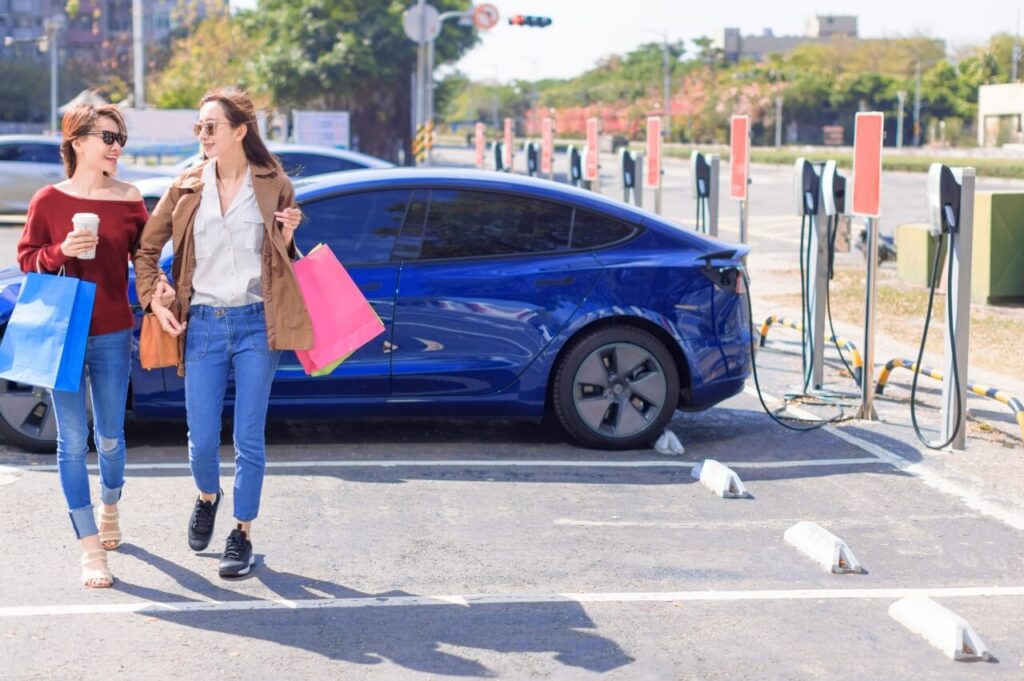
Equitable Distribution of Charging Stations
Accessibility is a cornerstone of a successful EV infrastructure. Charging stations must be distributed equitably across urban areas to address range anxiety and ensure all residents can access charging facilities regardless of location or socioeconomic status.
Focusing on public charging infrastructure is crucial, especially for those living in apartments or lacking home charging access. Strategic placement of charging stations in commercial centers, workplaces, residential areas and major transportation corridors is essential to create a convenient and reliable charging network.
Addressing charging deserts, often found in underserved communities, is also a critical aspect of equitable distribution. Cities should prioritize infrastructure investments in these areas to prevent a two-tiered system where EV adoption is limited by charging accessibility.
Furthermore, ensuring that charging stations are accessible to people with disabilities is a key consideration, aligning with principles of inclusivity and universal design. By prioritizing equitable distribution, cities can foster broader EV adoption and ensure that all population segments share the benefits of electric mobility.
Streamlining Payment and Reservation Systems
A seamless user experience encourages EV adoption and maximizes charging infrastructure utilization. Cumbersome payment processes or unreliable reservation systems can deter EV drivers and undermine the convenience of public charging.
Cities should promote standardized, user-friendly payment methods, such as contactless payments, mobile apps and RFID cards, ensuring interoperability across different charging networks. Implementing efficient reservation systems can also enhance user experience, allowing drivers to book charging slots in advance and avoid waiting times, particularly at fast-charging stations during peak hours.
Integration with navigation apps and real-time charging station availability updates further enhances convenience, guiding drivers to the nearest and most accessible charging options. By streamlining payment and reservation systems, cities can simplify charging, making it as easy and convenient as refueling a gasoline car. As a result, EV adoption and satisfaction will increase. Focusing on user experience is key to moving from early adopters to the mass market.
Community Engagement and Education
Successful EV infrastructure development requires proactive community engagement and public education. Addressing misconceptions about EVs, promoting the benefits of electric mobility, and involving residents in the planning process are essential for fostering public support and accelerating EV adoption.
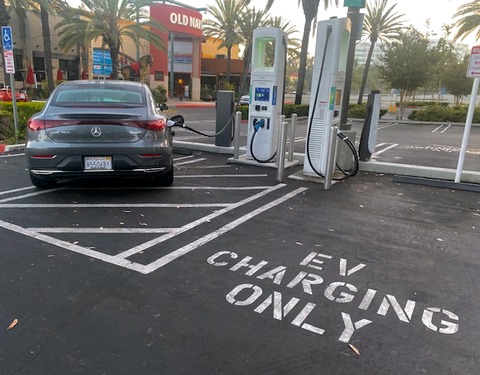
Public awareness campaigns can highlight the environmental and economic advantages of EVs and the convenience and growing availability of charging infrastructure. Community workshops and educational programs can help demystify EV technology, address range anxiety, and provide practical guidance on EV ownership and charging.
Engaging local communities in planning through public forums and surveys ensures that infrastructure development aligns with community needs and preferences. Moreover, showcasing successful EV initiatives in other cities and highlighting local success stories can inspire confidence and encourage wider adoption.
Cities can create a supportive ecosystem for electric mobility by prioritizing community engagement and education. This approach drives infrastructure utilization and increases societal acceptance of EVs. It also builds trust and transparency around EV infrastructure development, ensuring projects are well-received and effectively used by the community.
Navigating the Legal and Safety Landscape
With the expansion of EV infrastructure and adoption, addressing the unique safety challenges posed by electric powertrains, charging stations and battery technologies is essential. This proactive approach to adapting to new legal and safety standards will be crucial in fostering a safe, sustainable and innovative electric mobility future.
Adapting to New Electric Road Safety Standards
The rise of EVs and the expansion of charging infrastructure necessitate a proactive adaptation of legal and safety standards. Electric vehicles introduce new safety considerations, from battery safety and electromagnetic compatibility to the unique dynamics of electric powertrains.
As EV infrastructure becomes more widespread, ensuring the safety of public and private charging stations becomes paramount. This includes establishing clear safety protocols for installing, operating and maintaining charging equipment. It should also address potential hazards such as electrical faults and fire risks.
Furthermore, the increasing prevalence of EVs on roads requires reviewing existing traffic safety regulations and developing new standards specific to electric vehicles. This may include guidelines for emergency response involving EVs, regulations for autonomous EVs and standards for the safe disposal of EV batteries.
By proactively addressing these legal and safety aspects, cities can make the transition to electric mobility efficient, safe and secure for all road users and residents. This forward-thinking approach to safety and regulation is essential for building public confidence in EV technology and infrastructure.
The Role of Legal Preparedness in EV Infrastructure
Legal preparedness is an often-underestimated yet crucial component of building a robust EV infrastructure. As cities invest heavily in charging networks and encourage EV adoption, the legal landscape surrounding EV-related incidents, accidents and liabilities is becoming increasingly complex.
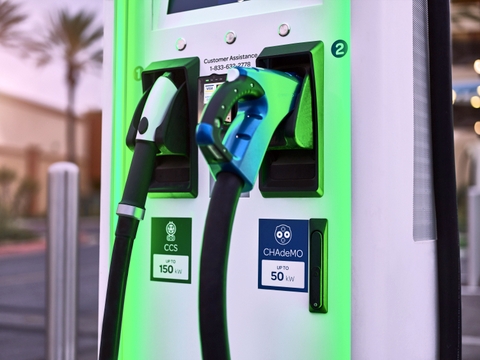
Consider the potential for accidents at charging stations or incidents involving autonomous EVs; these scenarios require clear legal frameworks to address liability, insurance, and compensation. This is where the expertise of groups like Mama Justice’s truck accident team becomes invaluable. While they handle truck accidents, that is not the extent of their specialty. They have a deep understanding of transportation law, accident liability and complex insurance claims that are highly relevant to the evolving EV landscape.
A law firm with experience in complex legal and technical cases can offer valuable expertise in EV safety and infrastructure. Whether it’s an accident involving a faulty charging station or a collision due to technical issues with an EV, experienced legal support is essential. A client-focused approach and track record of success show a law firm’s ability to handle these challenges. As cities develop their EV infrastructure, legal preparedness and expert counsel will be crucial for ensuring a safe transition to electric mobility.
As EV infrastructure expands and the number of EVs on roads increases, so too will the potential for unique accidents involving these vehicles and their charging ecosystems. Legal professionals experienced in dealing with the complexities of vehicle accidents and infrastructure-related liabilities are essential for protecting individuals’ rights and ensuring accountability.
Future-Proofing Legal Frameworks
Looking ahead, cities must proactively future-proof their legal frameworks to accommodate the continued evolution of EV technology and infrastructure. This involves anticipating potential legal challenges related to autonomous vehicles, smart city integration and the increasing interconnectedness of transportation and energy systems.
Legal frameworks must be flexible and adaptable to keep up with technological advancements and emerging business models in the EV sector. This may include developing regulations for data privacy in connected EVs, addressing cybersecurity risks in charging networks and establishing legal precedents for new types of EV-related services and technologies.
Furthermore, international collaboration on legal standards and best practices can help harmonize regulations and facilitate cross-border EV adoption. By taking a proactive and future-oriented approach to legal framework development, cities can create a stable and predictable environment that fosters innovation, investment and the long-term sustainability of their EV infrastructure. This foresight is crucial for ensuring that legal systems support and enable, rather than hinder, the progress of electric mobility in smart cities.
Final Thoughts
Establishing a strong EV infrastructure in smart cities is a complex task. It requires strategic planning, technological expertise, a focus on user-centered design and legal foresight. Developing infrastructure plans, forming public-private partnerships and integrating smart charging solutions are essential. Equitable access is key to creating a truly ‘smart charging’ urban environment.
As cities advance electric mobility, addressing legal and safety issues is crucial. Expert teams like Mama Justice’s truck accident team will play an important role. By adopting a comprehensive, forward-thinking approach, cities can unlock the full potential of EVs. This will lead to a future where urban transportation is cleaner, more efficient, legally sound, and fully integrated.
Sources:
- Policy Perspectives: Accelerating EV Adoption in Last-Mile Delivery in India
- Tata Tiago EV – Electrifying Urban Mobility with Style, Efficiency and Performance, Know More
- Why an electric vehicle company chose Houston over other U.S. cities
- Everyday IP: The Hidden IP In Smart Cities
- DEWA urges charge point operators to comply with regulatory framework for EV charging infrastructure
- New data reveals EVs cost thousands less to run than petrol or diesel cars
- Premier Forecourts and Construction expands EV infrastructure capability with Steve Warrington in key role
- Why more dealer incentives could be coming to new vehicles
- UK Government announces 16,000 EV chargers for Midlands
- NexisNeo Releases Report on Europe’s EV Policies Creating a Two-Tier Mobility System
- Older Ford F-150 Lightning EVs Get DC Fast Charging Boost Through OTA Update
- Teachers take advantage of EV charging funding – Transport + Energy
- Labour urged to remove regulatory red tape to help meet electric vehicle targets with 160,000 new EVs
- We’re Charging Our Cars Wrong
- Federal Electric Vehicle Chargers Unplugged: A Cold Snap in Green Policies – MotoPaddock
- Colorado’s Electric Dreams Stalled: A Bump in the Road for EV Infrastructure – MotoPaddock
- Trump’s war on Biden’s climate policy is creating a new form of EV range anxiety
- Despite federal rollbacks, private-sector EV charging projects plug away
- Prices of EVs to be same as petrol cars in 6 months, says Gadkari

2 thoughts on “Essential Steps to Establish a Robust EV Infrastructure in Smart Cities”